I spent a happy half hour reviewing the basic technique of poaching an egg with one of the teachers at the school where I volunteer. You’d think this is a pretty basic task, but the prevalence of those egg steamers that make little egg pucks, and that clamshell gizmo that prevents an egg from exploding all over the inside of the microwave, would indicate that there aren’t many people out there as dedicated as I am to properly poached eggs. All my children know that my idea of a perfect meal is two very soft poached eggs on plain, unbuttered, sturdy white toast, seasoned only with salt and pepper. If I could only choose one thing, that would be it.
My visits to Japan introduced me to the idea of topping salad, or a nice noodle or rice dish with a softly poached egg, the runny yolk becoming a sort of delicious sauce addition. I haven’t been able to master the “onsen egg”, which is poached in the shell. I’m not a big fan of fried eggs either (sorry, Kari) which FoodTV programs would have you believe is the perfect topper for anything from burgers to poutine.
Nope. I want to boil water, and follow my poaching ritual. It’s my Sunday treat.
How to Poach an Egg (or two, or more)
First, choose your eggs. Be sure to use the freshest eggs you can get. In the photo, you will note that there is a halo of thick, perky white around the yolks of my eggs. That’s optimal. Older eggs have completely runny whites, which will abandon the yolks in the hot water – not good. The runny part of the white will feather away in the hot water, but the more jelly–like part will stick with the yolk and protect it from overcooking. Also, fresher eggs have a more resilient yolk sack, so you’re less likely to rupture it on the way to the water. Supposedly, free range eggs are more resilient as well, but I never know exactly how “free range” supermarket eggs are. I’m lucky to get my eggs almost directly from the farm, and they are lovely and fresh and have nice, dark yellow yolks, so I’m happy.
Size matters. A jumbo egg takes a little longer to cook than a regular large egg. You can make really cute mini–bennies with smaller eggs. The temperature of the egg matters as well. An egg right out of the fridge takes a little longer to cook than one that is at room temperature. These are factors to be aware of, but you don’t have to warm your eggs in hot water before poaching, or limit yourself to regular large eggs. Make your own choices, and by all means do a little experimentation. Once you find your optimal protocol (in my case, 2 jumbo eggs, right out of the fridge, 1 1/2 litre pot, 5 minutes), stick with it.
If you don’t mind taking a risk, you can crack your egg on the counter and break it right into the water. I do that all the time. On the other hand, if you want to be sure no shell fragments are joining the party, and that your egg is in optimal condition (fresh, yolk not broken, not spoiled in any way), you might want to break your egg into a small dish or saucer, and then tip it from the dish into the water. You can do two eggs from one dish, but I think that’s the limit. I once read an article that suggested you break your egg into a fine–mesh strainer, so the more liquidy whites would drain away, and then tip the “best part” into your poaching water. I tried it once. Way too much trouble.



My current favorite method is to bring a pot of water to a full rolling boil, adding a generous amount of salt (about a teaspoon for a small pot) and a couple of tablespoons of vinegar (glug, glug – I don’t measure). This is the only time in my kitchen I will use white vinegar for anything other than cleaning fluid. Stir to dissolve the salt. Take the pot off the heat. When the water is calm (it takes about 15 seconds for the bubbles to subside), slip in the eggs – no need to swirl. There’s nothing wrong with swirling the water before you add your eggs. Technically, this is supposed to encourage the feathery part of the whites to wrap themselves around the yolk. I have never had that method work to my complete satisfaction. I like to use really fresh eggs, and leave that feathery stuff in the pot.
Put the lid on the pot, and set the timer for 5 minutes.
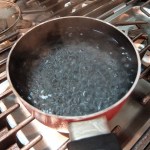



I happen to like extra large or jumbo eggs, and I like them really loose. Five minutes works for me. A regular large egg at room temperature will be quite a lot firmer at the five minute mark. In order to tell if the eggs are done to your liking, check them by very gently poking the yolk with the rounded tip of a spoon until you can see if they have achieved the firmness you desire. Check the whites right beside the yolk too – you don’t want that to be snotty (unless you’re me – did I mention I like my eggs loose?)


Remove the eggs one at a time with a slotted spoon and blot the bottoms on a clean kitchen cloth. You don’t need to christen your toast with a lot of poaching water.
Eat them any way you like them. Once removed from the water, you have about 10 minutes to consume them at the peak of perfection. They cool off pretty quickly, so it is a good idea to have whatever dish you’re planning to eat them from warmed and waiting.


This is the place where you say, “Well, I don’t do my eggs that way at all.” Fair enough. If you have a method that works for you, by all means, stick with it.
Big Batch Cooking
Let’s just imagine for a moment that it’s Boxing Day Brunch, and you have decided to prepare Eggs Benedict (or my lovely Green Bennies) for a whole bunch of people. Poaching eggs two at a time in a little pot is not going to work, unless you want to keep your guests waiting for a LONG time. Group poaching is pretty easy.
I’m going to illustrate poaching 6 eggs, but I’ve done as many as 12 this way with good success. Remember to have your other elements (sauce, English muffins, wilted spinach, whatever) warm and ready to go before you start to poach.
Choose a nice deep non–stick frying pan for the water, deep enough that the eggs will be completely submerged. It’s easier to keep track of doneness in a frying pan than it is in a deeper saucepan. You need to have a close–fitting lid for your frying pan. A pizza pan (the kind with no holes) works pretty well if the pan didn’t come with its own lid.
Bring your water to a boil, add salt (salty like the sea) and vinegar (about 2 Tbsp per litre), and turn the heat as low as it will go – you don’t even want simmering. If you have a non–induction electric range top, have a second burner on low and switch from the hot one to the cooler one, turning the hot one off.

Add your eggs one or two at a time, gently slipping them into the water from a saucer or small dish, making a nice orderly circle around the pan. Now, put on the lid, and slide the pan off the heat. Physics is at play here: the number eggs and how cold they are drops the temperature of the water, so timing it not an exact thing. Check the eggs at 5 minutes, and if they are too soft, check them at 30 second intervals, returning the lid between checks.


When they’re done, remove the eggs from the water in the order you put them in, blotting the bottoms and placing them on your prepared bases as you go. The nice thing about this method is you can accommodate your guests’ desire for firmer yolks, simply by leaving theirs in the water for another minute or so. Don’t feel you have to rush frantically to get everything on the plates and on the table — if your plates and accompaniments are warm, everything will work out well. Food is most flavorful when it’s warm, but not too hot. If it’s too hot to put in your mouth, you can’t taste it anyway. Warm is good.

Now, imagine you’re as OCD as I am, and you want to poach your eggs ahead, either to accommodate an open–house kind of Boxing Day Brunch where you’re not feeding everyone at once, or just to have some pre–poached eggs on hand for a quick lunch or dinner. There is a way!
Softly poached eggs can be moved directly into an ice water bath to stop them from cooking any further.
The Serious Eats website says you can keep poached eggs in cold water in the fridge for up to 5 days, and they’ve never lied to me yet. They have a whole neat method using a vegetable steamer as a giant slotted spoon, etc, etc, which bears review if you’re ever planning to do this in a really serious way.
To reheat your eggs, bring a pan of water to the boil, then take it off the heat. If it’s just you and one egg, you could heat your water up in a big measuring cup in the microwave, but be careful — it sort of “explodes” when you add anything to it if it’s boiling hot, but not actually bubbling — swish your spoon in it first. Using a slotted spoon, transfer your cold egg(s) to the hot water, and let them sit for a minute with a lid on. This rewarming does not really act as a second cooking, but I find the whites set up nicely while the yolks stay runny. It’s a tiny bit faster and a tiny bit less messy than starting from scratch, and it’s a terrific way to pre–plan integrating poached eggs into anything from a simple supper to any lavish company meal you might envision.







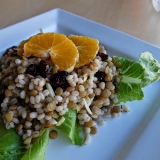
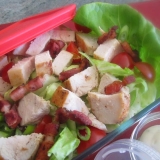
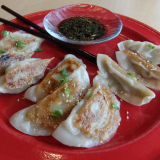

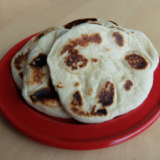
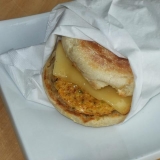
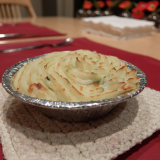
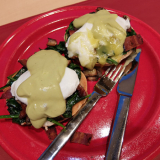
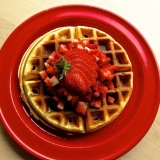
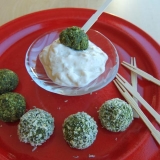
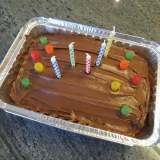
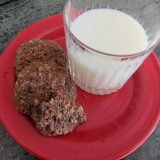
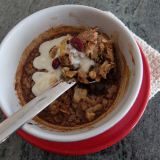
Leave A Comment